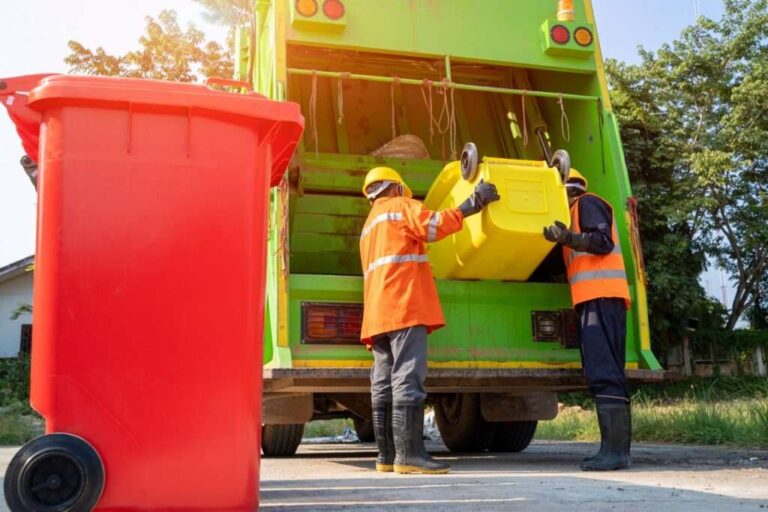You know how it goes. We buy stuff, use stuff, and then one day look around and think: “Whoa, where did all this junk come from?” It’s like junk just multiplies when we’re not looking.
And sure, we could chuck everything into the trash and call it a day. But that’s not doing our planet any favors, right?
The good news? Getting rid of your unwanted stuff doesn’t have to mean sending it straight to a landfill.
There are tons of planet-friendly options that are actually pretty simple to try.
Some might even put a few bucks in your pocket. Win-win!
Green Ways To Handle Junk Responsibly
Let’s talk about how to ditch your junk without trashing the planet.
These aren’t complicated science projects or things that take tons of time.
Just regular, everyday choices that add up to make a real difference.
Donate Usable Items to Charities
Got stuff that still works fine but you just don’t need anymore? Someone else might be looking for exactly what you’re tossing out! Your old coffee maker, that jacket you never wear, or the books you’ve already read can find new homes through local charities.
Most donation centers like Goodwill or Salvation Army accept clothing, furniture, kitchenware, and electronics that still work.
Many will even come pick up bigger items from your house. Just give them a quick call first to check what they’ll take.
Pro tip: Clean everything before donating.
Nobody wants your dusty lamp or stained shirts. And grab a receipt while you’re there—those donations can be tax write-offs!
Recycle Properly at Approved Facilities
Recycling isn’t just about tossing everything in the blue bin and hoping for the best.
It actually works better when we do it right!
Different materials need different recycling processes.
Plastic bottles, cardboard, aluminum cans, glass jars—they all get turned into new stuff through specific methods.
Your local recycling center has rules about what they can process.
Take five minutes to check your city’s recycling website to learn the local rules.
Some things that seem recyclable actually aren’t (like greasy pizza boxes or plastic bags), while other things need special handling (like batteries or light bulbs).
Quick tip: Rinse out food containers before recycling them.
Food gunk can spoil entire batches of recyclable materials!
Upcycle Old Items into New Functional Pieces
Ever seen those cool Pinterest projects where someone turned an old ladder into a bookshelf or made garden planters from worn-out boots? That’s upcycling! It’s like recycling’s creative cousin.
Instead of throwing something away, you reimagine it as something totally different.
An old wooden door becomes a dining table. Mason jars turn into light fixtures.
That wobbly dresser transforms into a kitchen island with some wheels and a new top.
You don’t need to be super crafty to try this.
Start small with simple projects like turning a coffee can into a pencil holder or using old shirts to make cleaning rags.
Your wallet will thank you, and so will the planet!
Compost Organic Waste at Home
Food scraps and yard waste make up nearly 30% of what we throw away.
But this stuff doesn’t belong in landfills! When organic material gets trapped in landfills without oxygen, it creates methane—a greenhouse gas that’s way worse than carbon dioxide.
Setting up a compost bin is surprisingly easy.
You can buy one or make your own from a plastic tub with some holes drilled in it.
Then just add fruit and veggie scraps, coffee grounds, eggshells, leaves, and grass clippings.
The magic happens when tiny organisms break it all down into super-rich soil that your plants will absolutely love.
It’s like making plant food for free from stuff you were going to throw away!
Just keep meat, dairy, and oily foods out of your compost pile.
Those attract pests and can make the whole thing smell bad. Nobody wants that.
Sell Working Items Online or at Local Marketplaces
That exercise bike you bought with good intentions but never use? The phone you upgraded from that still works fine? Someone might pay you for them!
Apps like OfferUp, Facebook Marketplace, and Craigslist make it super easy to connect with local buyers. Or try dedicated sites like Decluttr for electronics or Poshmark for clothes.
Take clear photos of your items (in good lighting!), write honest descriptions, and price things fairly. You’ll be surprised what people will buy.
I’ve seen people sell half-empty bottles of perfume, random furniture parts, and all kinds of weird stuff.
The best part? You make some cash, your stuff finds a new home, and nothing ends up in the trash. That’s what I call a triple win!
Use Eco-Friendly Junk Removal Services
Sometimes you just have too much stuff to handle on your own.
Maybe you’re clearing out a relative’s home or finishing a big home renovation project.
That’s when junk removal services come in handy.
One practical way to start is by choosing a junk removal service that prioritizes eco-friendly practices. These companies will sort through your stuff and make sure recyclables get recycled material, donations get donated, and only the true trash goes to the landfill.
“What percentage of the junk you collect gets diverted from landfills?” and “Where do you take recyclable materials?” Good companies will have clear answers and will be happy you asked.
They cost a bit more than just renting a dumpster, but the environmental benefit is huge.
Plus, they do all the heavy lifting!
Participate in Community Swap Events
Swap meets are like trading posts for the modern age.
You bring stuff you don’t want, other people bring their unwanted items, and everybody goes home with “new-to-you” treasures.
Look for clothing swaps, book exchanges, toy swaps, or general community free markets.
Schools, libraries, and community centers often host these events.
If you can’t find one, why not start one? You could begin with just a few neighbors and grow from there.
The fun part is that you never know what cool stuff you might find. And the conversation and community connections are a nice bonus too!
Properly Dispose of Hazardous Materials
Some junk isn’t just junk—it’s actually dangerous if thrown away with regular trash.
Things like paint, cleaning products, motor oil, batteries, and old electronics contain chemicals that can leak into soil and water.
Every county has special collection sites or events for hazardous waste.
They might not be as convenient as your regular trash pickup, but they’re super important to use.
Never pour chemicals down drains or mix different products together—this can create toxic reactions.
Store everything in original containers until disposal day, and keep them away from kids and pets.
Your future drinking water will thank you for the extra effort!
Repurpose Construction or Renovation Debris
Home projects create tons of leftover materials.
Wood scraps, extra tiles, half-full paint cans, removed fixtures—this stuff is too good to trash!
Habitat for Humanity ReStores and similar building material reuse centers will take many construction leftovers.
They sell them at discounted prices and use the money for community projects.
For smaller scraps, get creative! Wood pieces can become shelves, garden borders, or art projects.
Extra tiles make great trivets or mosaic materials.
Old doors and windows have endless decorative possibilities.
Even broken concrete has uses—it can become garden path stepping stones or fill for retaining walls.
One person’s construction trash is another’s raw material!
Reduce Junk Generation Through Mindful Purchasing
The greenest junk is the junk you never create in the first place! Before buying anything new, ask yourself: “Do I really need this? Will it last? What will happen when I’m done with it?”
Try renting or borrowing things you’ll only use occasionally.
Tools, party supplies, and specialty kitchen gadgets don’t need to take up permanent space in your home.
When you do buy, go for quality over quantity.
Good stuff might cost more upfront but saves money and resources when you don’t have to replace it constantly. And choose products with minimal packaging whenever possible.
It’s like that old saying: “Use it up, wear it out, make it do, or do without.” Our grandparents knew what they were talking about!
Conclusion
Handling junk responsibly isn’t rocket science.
It’s just about making slightly better choices and being a bit more thoughtful about where our stuff ends up.
You don’t have to try all these methods at once.
Start with whatever seems easiest for you—maybe setting up a donation box in your closet or finding your local recycling rules.
Small steps add up to big changes when we all pitch in.
Our trash doesn’t really disappear when it leaves our homes.
It goes somewhere on our planet. But with these simple green approaches, we can make sure more of our unwanted stuff finds new life instead of just taking up space in a landfill.
Your future self, your wallet, and our planet will all be happier for it.
Now that’s what I call taking out the trash right!



